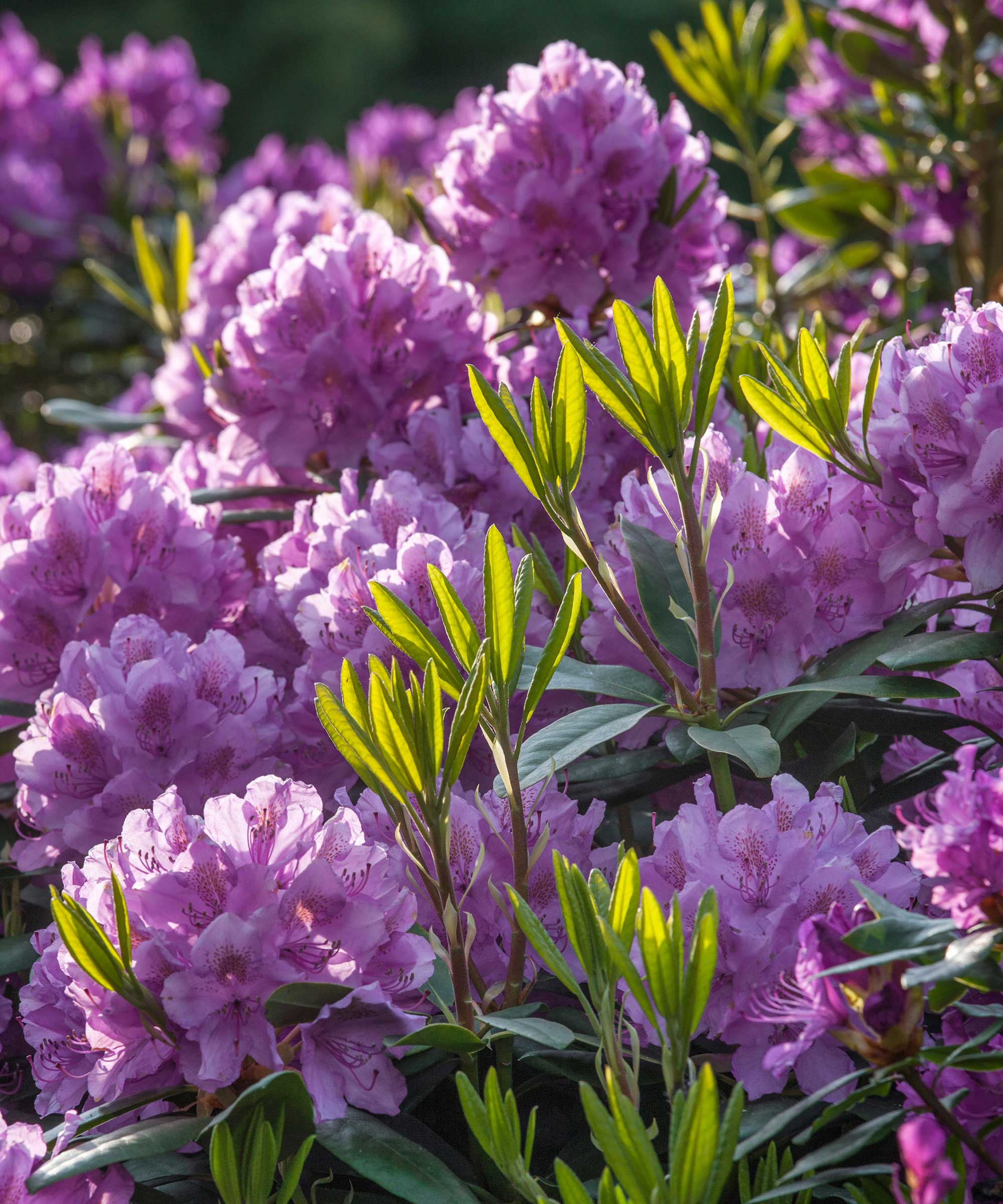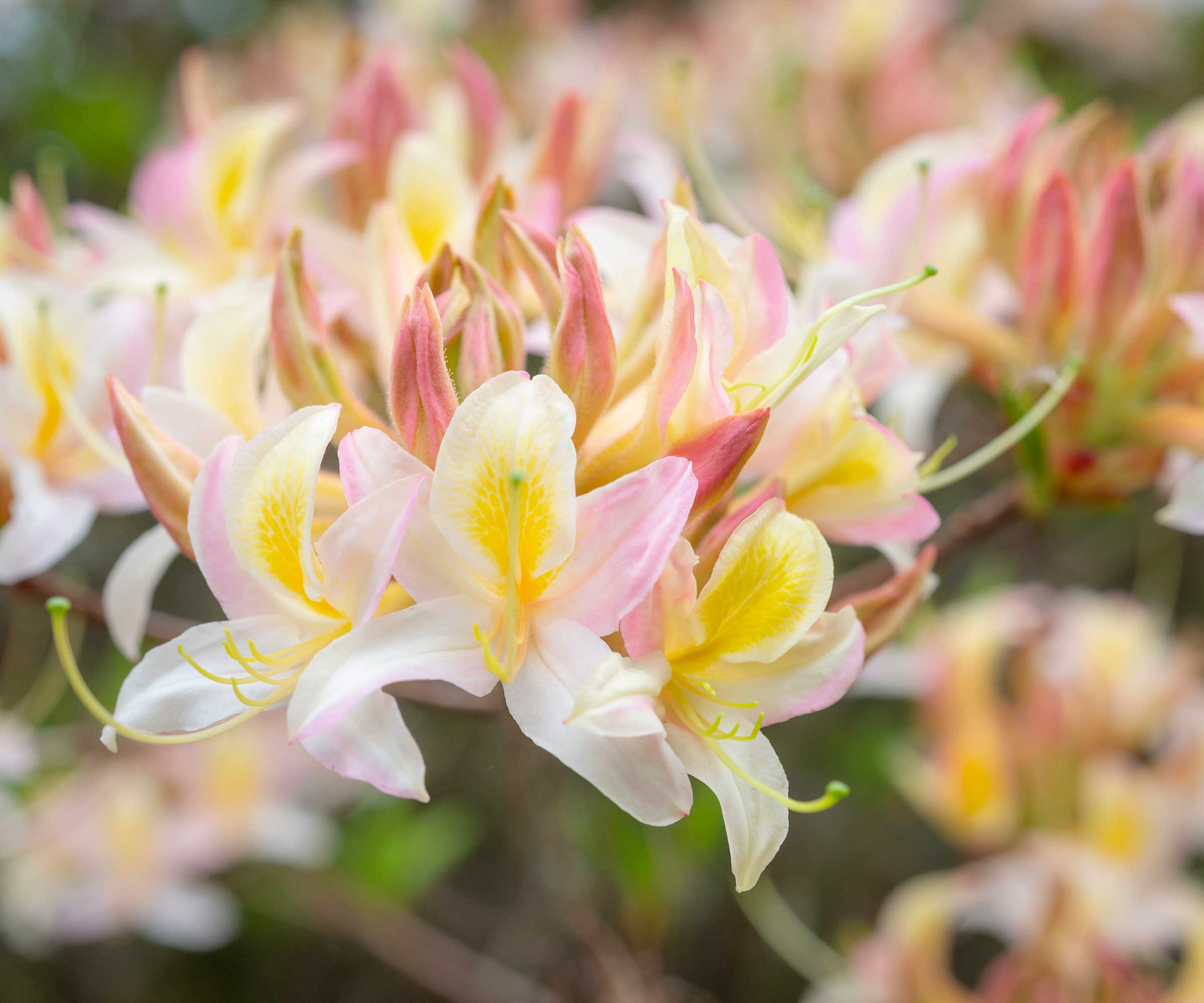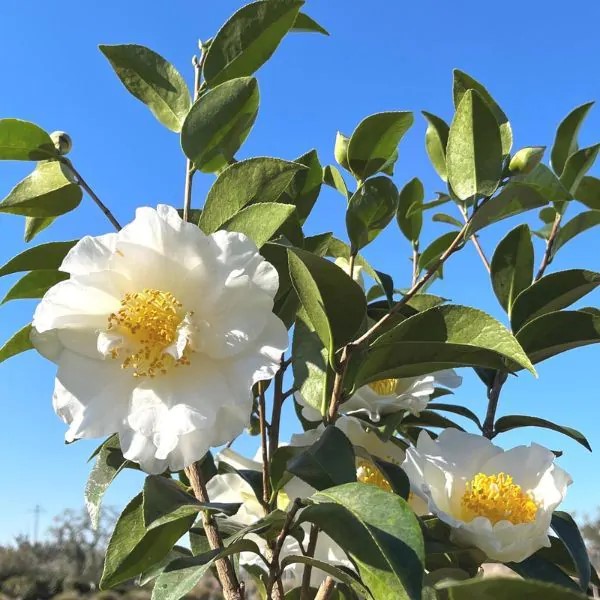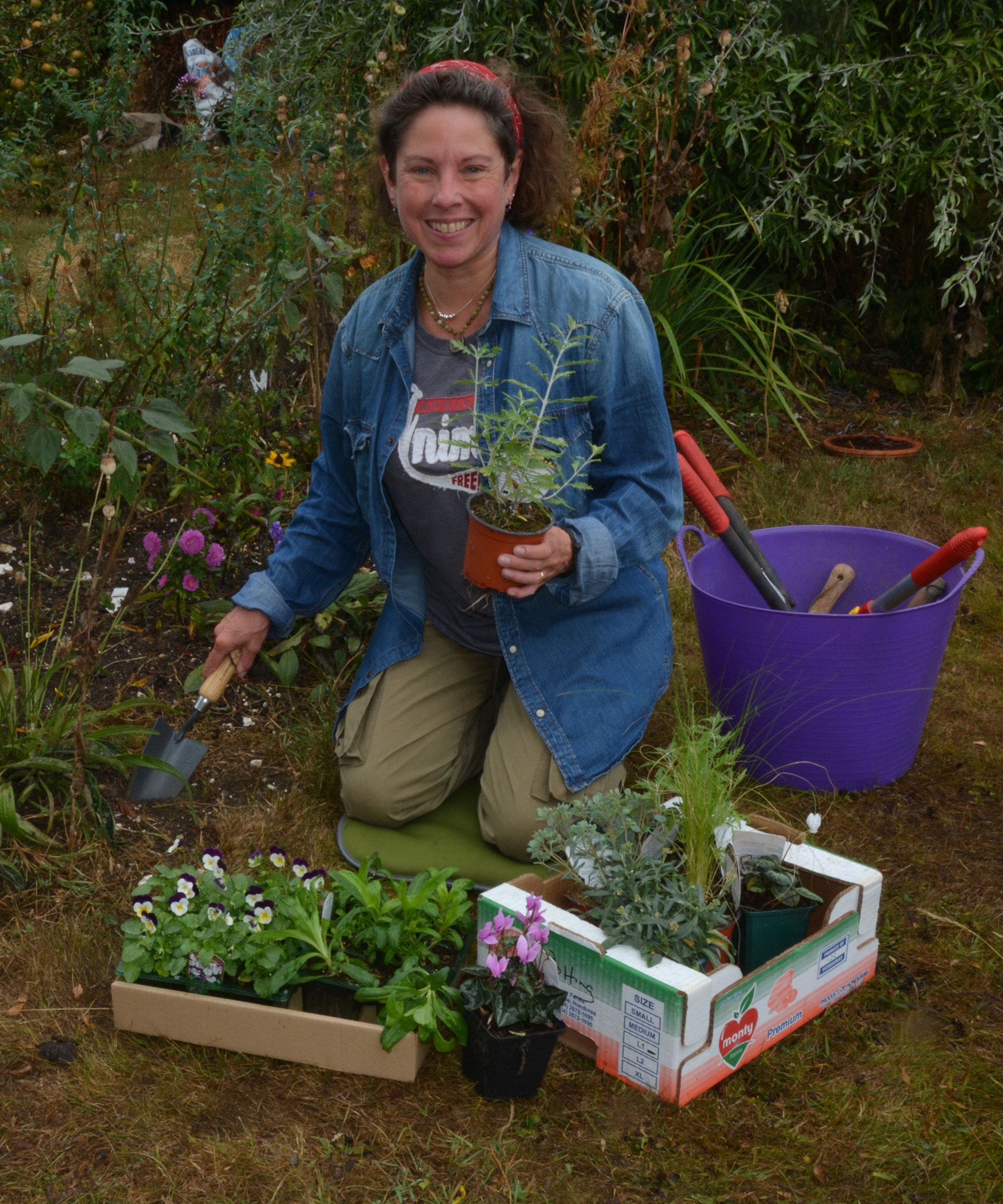9 plants that like coffee grounds – reuse your daily brew to perk up these acid-loving flowers, fruits and shrubs
These plants that will flourish with an added caffeine boost


More than two billion cups of coffee are drunk worldwide every day – and that creates a mountain of used coffee grounds.
Luckily, the waste product of our global caffeine addiction can be used in the garden, because coffee grounds can be good for plants. As part of a sustainable garden, the most effective way of using coffee grounds as a plant food and to improve the soil is to add them to the compost where they will break down as part of the overall composting process. Not only can they be used to perk up our plants, they are also a useful weapon in the constant war against garden pests.
Coffee grounds can be a great addition to your garden, especially for flowers, shrubs and fruit crops that thrive in acidic soil or need to be grown in containers of ericaceous compost. The grounds contain essential plant nutrients needed for healthy growth and if burnt, can even help to deter mosquitoes. Here are nine popular plants that will benefit from a caffeine fix.
1. Rhododendrons

Rhododendrons thrive in acidic soil so coffee added to their soil will give them a boost
There are more than 1,000 species of rhododendron, and a staggering 25,000 cultivars and hybrids. These large plants are one of the best shrubs for shade and thrive in acidic conditions and, depending on the variety, will flower in spring, summer and the fall.
They are toxic to humans and animals so take care with children and pets.
Rhododendrons can be grown in USDA hardiness zones 4-9, and a wide range of rhododendrons plants are available from Fast Growing Trees.
2. Azaleas

Members of the rhododendron family, azaleas tend to be more compact and perfect for smaller yards
One of the best spring flowering shrubs and often added to Japanese-style garden schemes, azaleas can be either deciduous or evergreen, and their blooms come in vibrant shades of purple, yellow, and red, and white.
Design expertise in your inbox – from inspiring decorating ideas and beautiful celebrity homes to practical gardening advice and shopping round-ups.
Usually smaller than their relatives, rhododendrons, azaleas are long-lived and easy to grow, making them ideal for adding structure to your flower bed ideas.
Grow in USDA hardiness zones 6-8.
3. Hydrangeas

Whether grown in containers or the soil, coffee will give hydrangeas a boost
Did you know that although you can grow hydrangeas in acidic and alkaline soil types, the color of their flowers will change with the pH of where they are planted?
These are popular shrubs with circular heads of flowers in shades of pink, purple and blue, and white, that last through summer and turn attractively papery in the fall, when they have a specific care regime.
The more acidic your soil, the bluer hydrangea blooms become and slightly acidic coffee grounds can accentuate this.
There are many varieties of hydrangea to grow, and they can be cultivated in zones 5-9. A wide range of hydrangea plants can be found at Fast Growing Trees.
4. Blueberries

Coffee grounds will help boost the fruitiness of your blueberries
To my way of thinking, a perfect start to the day involves a strong cup of coffee and a breakfast bowl topped with luscious homegrown blueberries that have been fed with a liquid coffee ground fertilizer. There again, I also rather like them on top of a mouth-watering lemon cheesecake tart!
These acid-loving berries are a worthy addition to your kitchen garden ideas. Plants can take up to three years to mature enough to provide a harvest but it is worth the wait.
If you have very alkaline soil, you can easily grow blueberries in pots, as I do. They thrive in acid soil and will appreciate composted coffee grounds forked into their soil or being watered with a coffee infusion.
5. Roses

Roses are hungry plants and will gratefully feast on composted coffee grounds
There is a rose variety for every yard, whether it’s a rambling rose, a climber, miniature or resilient shrub rose.
When you grow roses, especially young plants getting established, they benefit from nitrogen-rich coffee grounds gently incorporated into into their soil or compost and the gritty texture can also deter pests.
Roses can be grown in zones 3a-11 and a wide range of rose varieties can be bought from Walmart.
6. Camellias

Light shade and lime-free soil will keep your camellias happy and thriving
In the wild, beautiful camellias can be found growing naturally in woodland areas of China and Japan, so when growing them, try to recreate the same conditions.
There are many varieties of camellia, some with such perfect, symmetrical blooms they almost look artificial. They can be successfully grown in pots, though avoid placing them in harsh, direct sunlight.
They are slow-growing, long-lived and can be planted at almost any time of year apart from the driest summer months when sufficient watering may become an issue.
Grow camellias in zones 7-9, though the hardiest varieties can be grown in zone 6.
7. Oriental lilies

Exotic-looking Oriental lilies need slightly acidic soil or potting compost to flower their best
Oriental lilies such as the ‘Stargazer’ variety are some of the best summer bulbs to add to your yard.
Renowned for their large, pink, fragrant flowers , Oriental lilies prefer slightly more acidic soils than Asiatic lily varieties like tiger lilies.
Feeding lilies is essential, and amending their growing medium with composted coffee grounds will help them grow strongly and flower well.
Grow in zones 4-9, Oriental lily bulbs can be bought from Walmart.
8. Christmas cactus

Give your Christmas cactus some extra resilience with a caffeinated feed
Christmas cactus is one of the most popular tropical plants, thanks to their ability to live for decades and produce a profusion of gorgeous pendulous flowers over the festive season.
They are best planted in terracotta containers, like this three-pot Sungmor set on Amazon, that wick away excess moisture, as they hate sitting in soggy soil.
If grown outside they thrive in zones 10-12.
9. Houseplants

African violets, or Saintpaulia, are one of the houseplants that will benefit from being watered with a diluted coffee infusion
A fertilizer made from coffee grounds is an economical and easy way of giving indoor plants many of the nutrients they need.
I water several of our houseplants with a weak coffee solution during the summer when they are growing strongly.
African violets, peace lilies, Boston ferns, snake plants and aloe vera will all benefit from the nitrogen contained in spent grounds.
Always take care when watering African violets, and avoid dripping any moisture on the hairy leaves as this can cause staining and rotting.
Walmart stocks a wide range of houseplants, many of which are easy to care for, as well as indoor plant potting mixes.
FAQs
Are coffee grounds safe to use around pets?
Caffeine can be toxic to dogs and although most of it will have been removed during the brewing process, it is best not to scatter the grounds in areas of the garden frequented by your dog. It is safer to add them to the compost heap where they can break down without risk.
Can I use tea as a plant food?
As with coffee, diluted cold tea is best suited for use on plants that favour acidic conditions. After all, it is made from the leaves of Camellia sinensis, a camellia that will have taken up acidic compounds from the soil it grows in.
Tea leaves are high in nitrogen, which benefits leafy plants, but they also contain tannic acid which not all plants love, as well as aluminum, fluorine and manganese that can slow plant growth in high enough doses.
As with coffee, the best way to recycle tea leaves is to add them to the compost heap where they will safely break down as part of the overall mix.
Take care when composting tea bags as some contain plastic and others may contain chemical residues, so adding them would be a composting mistake.
A lot of coffee shops give away their used grounds for free, meaning they are a great addition to an economical, zero-waste gardening regime.
Not only does coffee give us a morning perk, it can help some of our precious plants too. So next time you brew a cup, add some of the grounds to the compost or save them to make a liquid fertilizer and look forward to flourishing plants in your home and yard.

Ruth is a Contributing Editor for Homes & Gardens, and formerly Gardening Editor of Amateur Gardening magazine. She is horticulturally trained, with a qualification from the Royal Horticultural Society. Her work for Amateur Gardening, the world's oldest weekly gardening publication, involved matching gardening tasks with each season, covering everything from sowing and planting, to pruning, taking cuttings, dealing with pests and diseases and keeping houseplants healthy. She is an expert in ornamental plants and edible crops, and everything she writes about and photographs is in her own garden, that has been a work in progress since her family moved there in 2012.